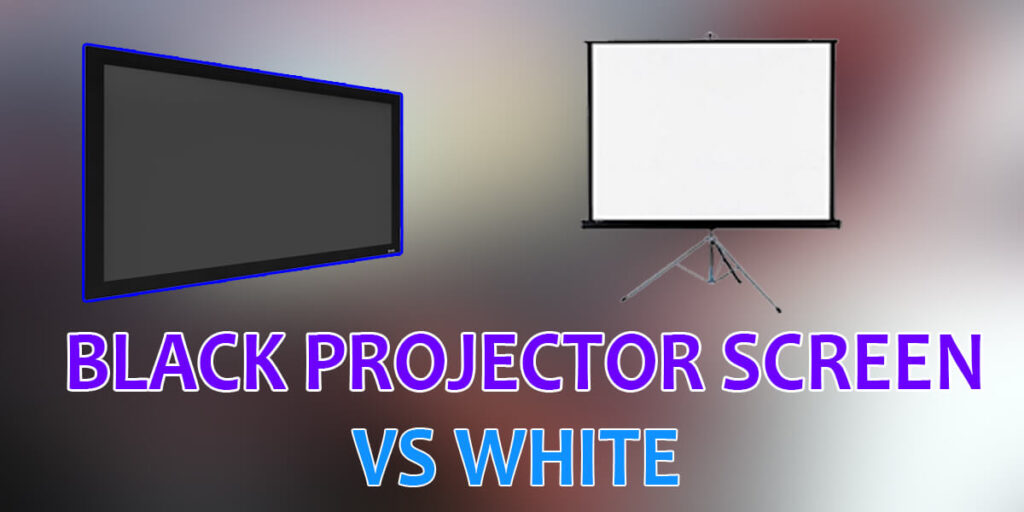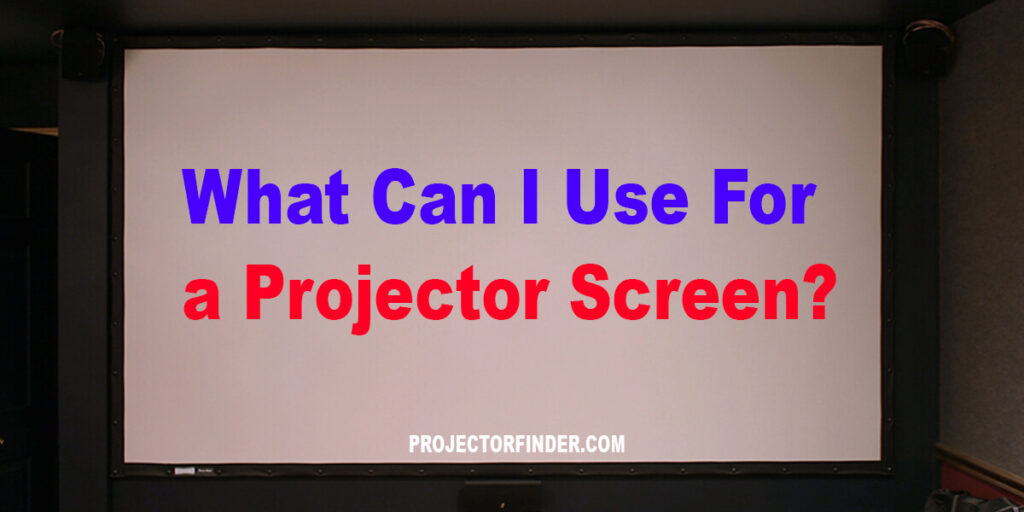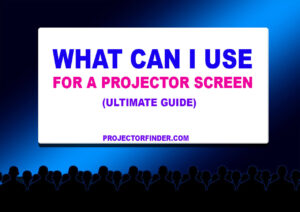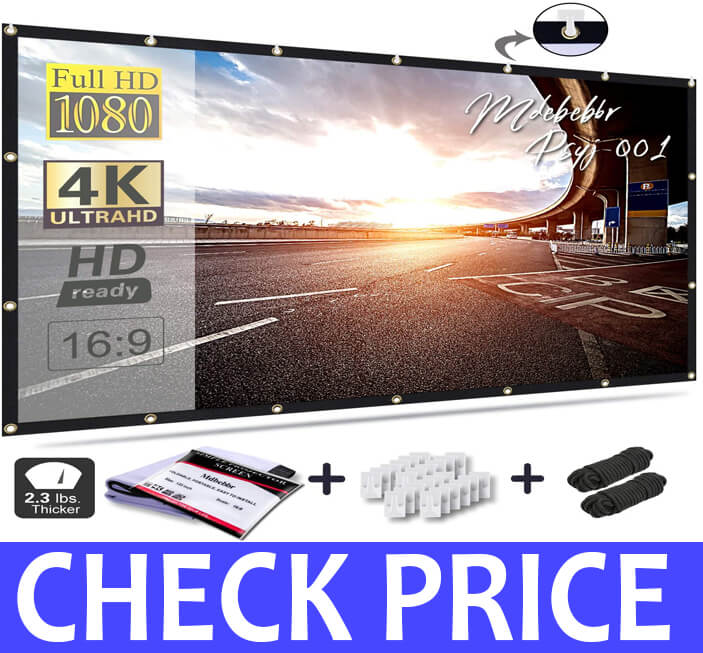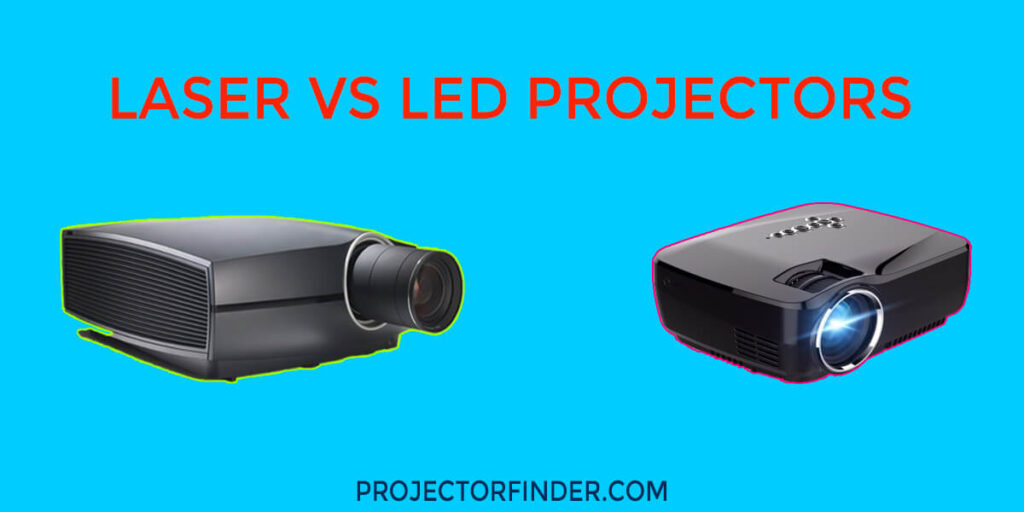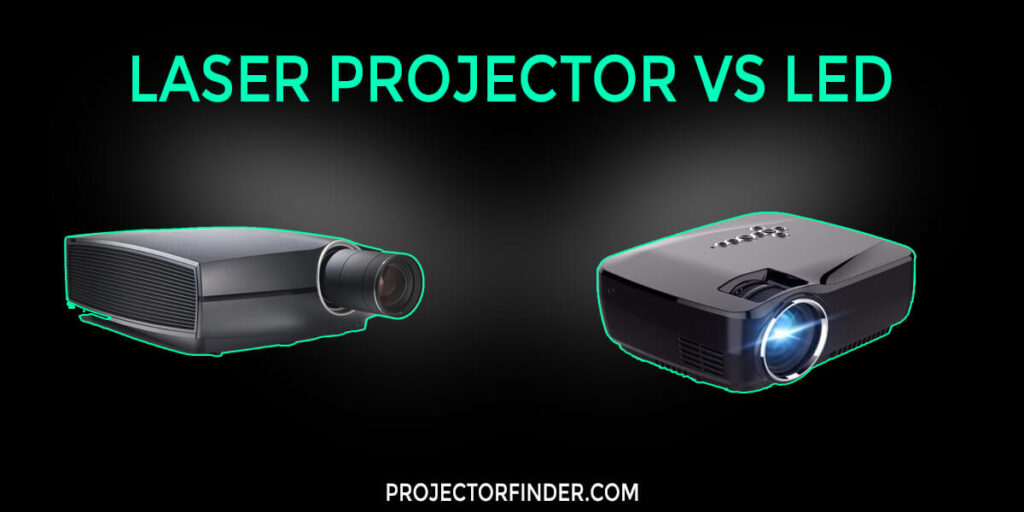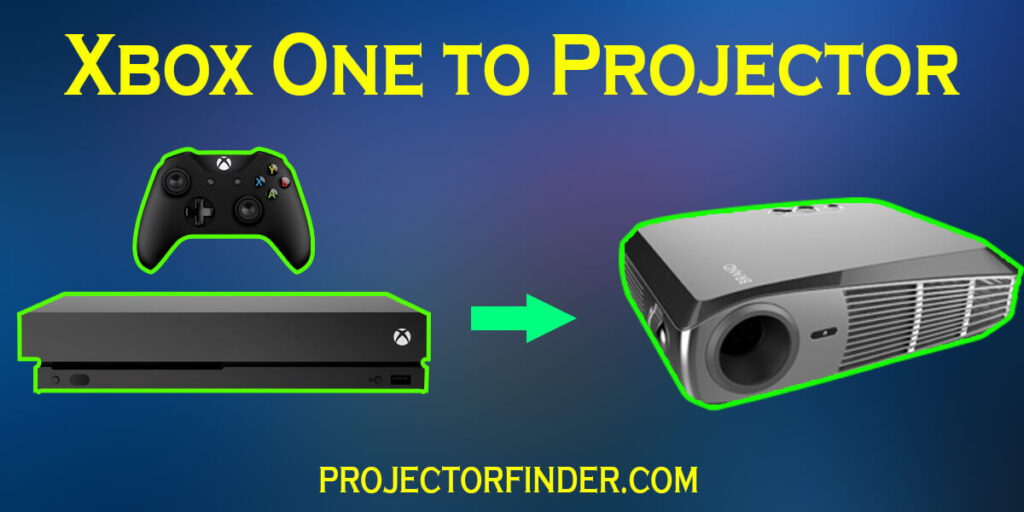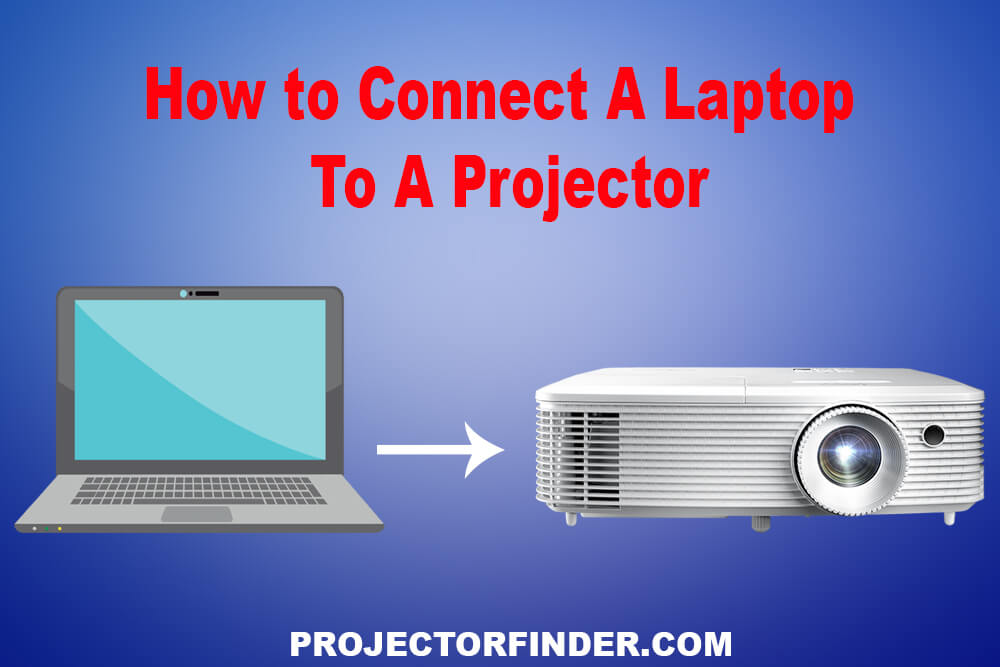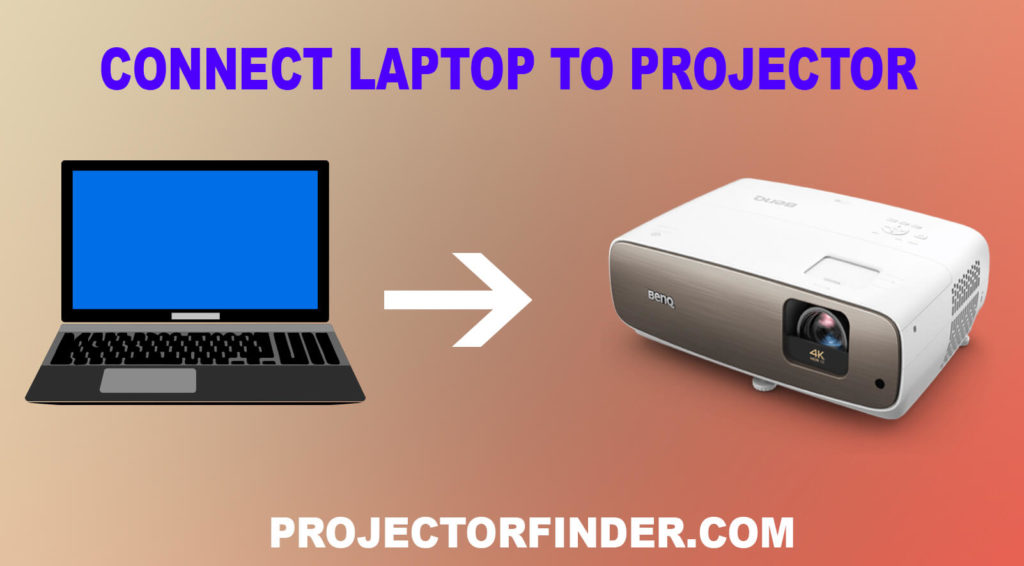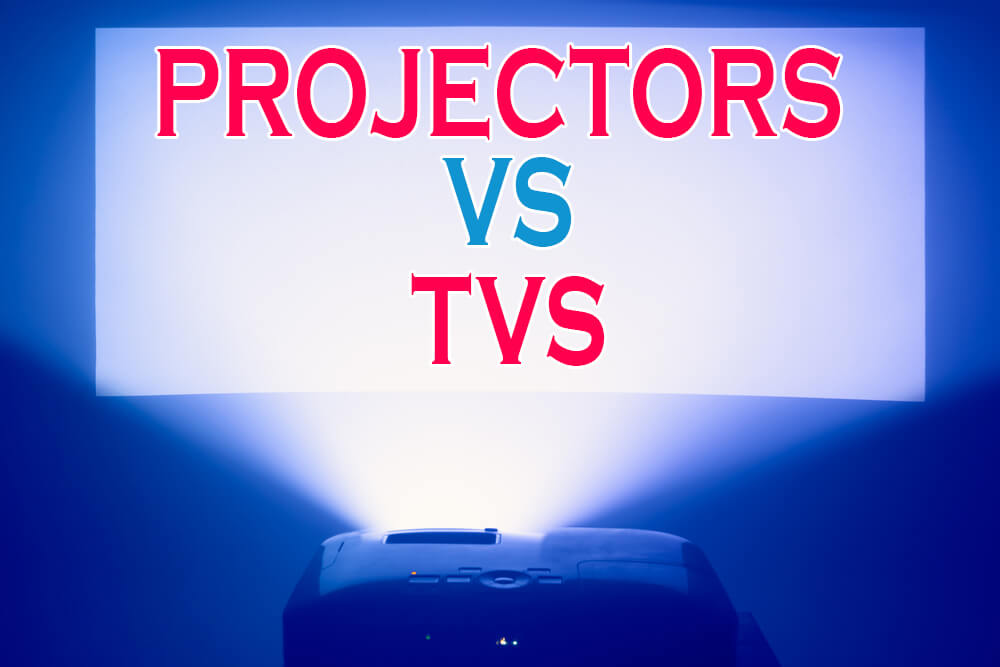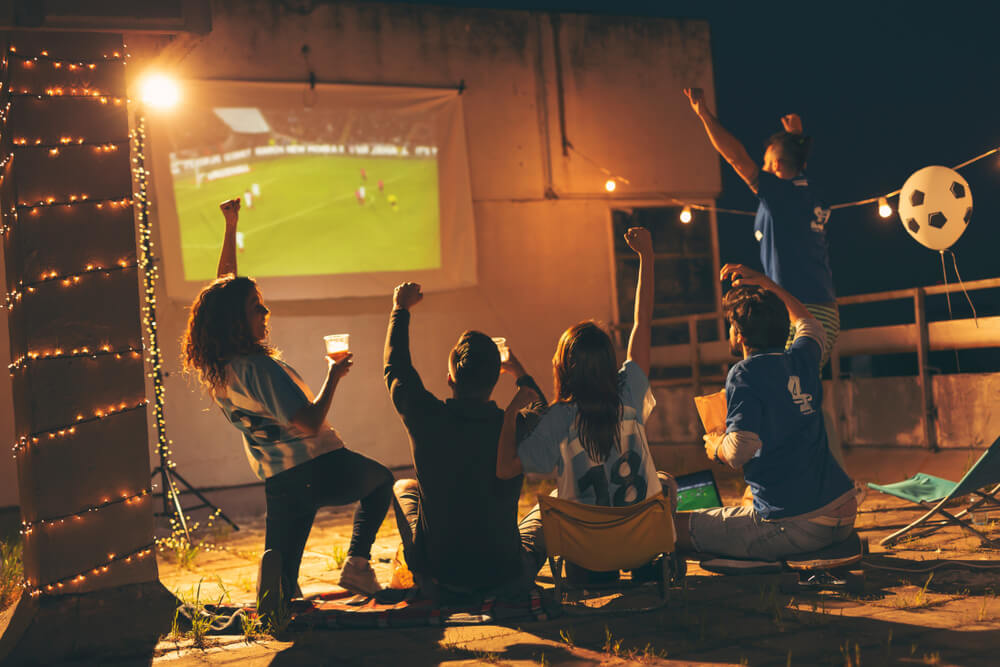The real dilemma is to find the balance (of course, the winner) between black projector screen VS white.
To your personal taste to the widely-adopted by the majority involving the standard rules maintained by the public opinions and the in-depth research are done to find which projector screen works, either it is white or black.
Finding the real constructive comparison is just paragraphs away to detect which benefits and flaws you may come across with.
To ease down the whole comparison into understandable pieces to actually justify which colors to pick from.
Gone are the days when the white was the ONLY available and the standard color used to project but with the technologies’ advancement. Thanks to the creative minds of today’s people, their color combination has evolved beyond limits.
It is NOT just black that overweighs upon white but got a few more of them.
Since we are here to compare the best out of black and white and we will stick to the both and find all the features and the flaws to detect.
Let’s hop onto the comparison part NOW!
Black Projector Screen vs White
Well, it does not involve having the wall painted with the black or white color but the full-fledged dedicated screen to purchase from the market.
So, do throw out this thought of getting the wall colored from your mind to focus just over the most amicable screen to fully project around the screen’s width and length.
There are a couple of impactful steps to see through when deciding either to go with a black or white screen for the projector.
Knowing exactly what are the advantages and the disadvantages out of the black and white screen, that would streamline the whole process to make up the mind to ensure what is the best color to go with the definitive conspiracies unriddling along the way.
Get set ready to find and get revealed with the whole of it.
1. Throwback on the projection screen’s colors
If you do not know when the projector was invented, it came into existence in Atlanta, Georgia, in 1895.
By long, the white color was widely used from the beginner until the new colors entered into the world of projection to clarify the results.
2. Lights matter
Take it to the general scope; the black color is viewable from the distance and white, as well.
So, what is the difference between pointing out here?
No, actually, when you happen to project the content on the screen comprised of black and white colors, you should be able to;
- View the content projecting on the white screen with difficulty.
- Would be able to view the content easily on the black screen without pinching your eyesight.
Projecting the content on the black-based projector screen is able to throw the visuals even in the well-lit rooms clearly. And they are prone to deliver 85 percent of light rejection, meaning it does show everything with ease despite the light spilling inside from around the room/area without having to blindfold the windows and turn off the excessive light.
As with the white projector screen, it delivers up to 10 percent of light rejection, which would be challenging to get the content viewed when the lights are on. You would just have to decrease the external lights to as much as zero percent to get a glimpse of what’s being projected.
The winner out of the projector screen’s lights matter: BLACK all the way!
3. Power of color retention, a.k.a., the quality
In terms of quality, we beg no different from the proven claim that both of the projector screens are having white and black color come with the best color retention to deliver the outstanding and around real-life color to like viewing the scenes to their closest reality.
Still, to spot the real winner down here forms the color retention quality; the best out of the best is to go with BLACK here.
Able to deliver the increased contrast to project the colors. While with the white screen, it would bleed out the lighter colors that would eventually lose the brights and the black color, which appears faded to the most.
You can still find some flaws with the black screen as that would not work entirely best with projecting the low-contrast content, and the darkened areas of the picture would lose the details giving you obnoxiousness to spot what’s there.
In today’s world, the low-contrast projectors are rare to find, so you got your back covered when opting for the projector, as this is one of the core features the people eventually look for.
Winner: Black!
4. Reflection
Having a projector means you would turn it on when the people gathered around, and not an ordinary TV can handle the mass.
NOT seating close to the projector screen, you can be seen people seating anywhere given the fact the projector can go as far as 120″ or more as the screen capacity; the reflection can be a tedious job down here for the people seated far from the screen.
In generality, it is known the black absorbs the light while white reflects it the most.
Same goes for the screen color where the white would bounce back a lot of the light, allowing you to see what’s been popping up on the screen from any angles despite the fact you are seated in the front, or the sides form the screen to get a lock on the clear pictures from all angles.
With that, the white would be emitting a lot of reflection to brighten the entire room destroying the whole experience of enjoying the darkened environment, which the white would have a hard time dealing with.
Going with a black screen that takes the light to be best absorbed, the effect would be entirely different from the expectations.
To accommodate the larger gathering, you should make people get seated as much in front as possible than on steering towards the sides as it would not let anyone view what’s being projected. So, get them sitting at an angle to enjoy the screen the most!
As it absorbs a lot of light, taking the brightness to hit up to 100 percent would not still light the room. That saves you from blindfolding the windows to stop the sunlight from bleeding in.
A Winner here: BLACK, of course!
The winner between the black projector screen vs white
Black. The all-time favorite color of mine, the BLACK!
Conclusion of the black projector screen vs white
We already know who the winner from the black projector screen vs white is out of the comparison.
Being used for years, the white still does not lose its impact and importance. Yet, especially with the home theaters and the environments where the visual content has to be projected, the black projector screen is invading the scope.
Bettering to deal with the high contrast without handling to lower down the lights, the black does exceptionally well in all of the environments.
Get it and forget the issues to ever face in projecting the high-end and qualitative content in a new way! 🙂
